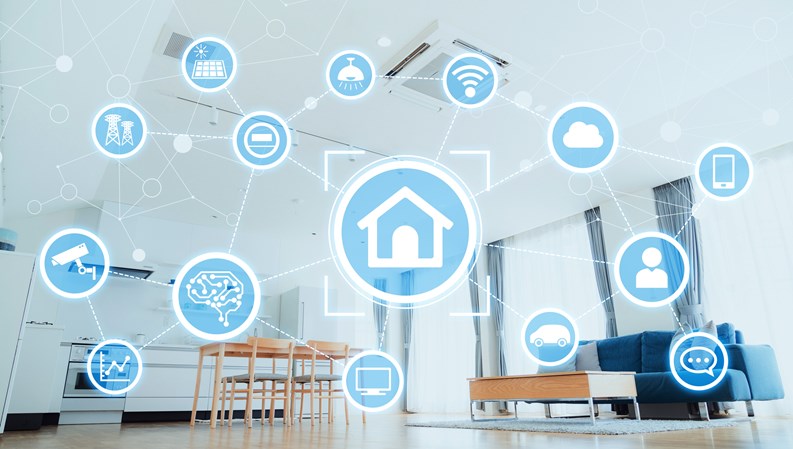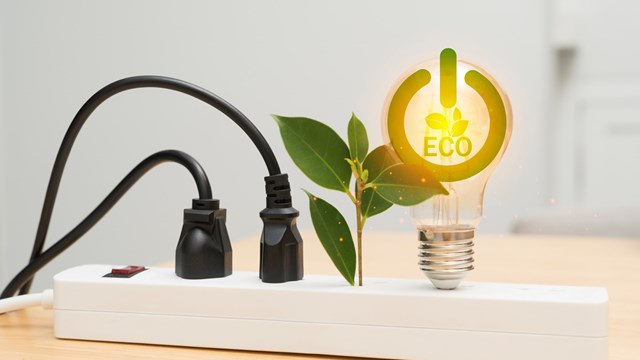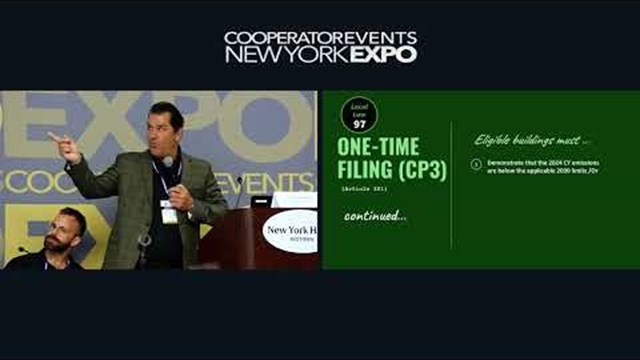The forward march of innovation is constantly changing the face of nearly every industry—including residential real estate. To keep co-ops, condominiums, and other multifamily communities functioning optimally, we need to keep abreast of the latest advancements in building systems. Here are a few of the latest trends.
Life Support System
Advancements in communication technology have led to more efficient and more accessible ways to keep tabs on what’s going on in our buildings at any given moment. One of the most notable in the last few years is building management systems, or BMS. BMS software and hardware networks enable managers and building staff to monitor everything from air quality to security systems, alerting them of irregularities, reporting in real time, and giving them valuable data on things like energy efficiency, building access, and more. It’s almost as if the property is an organism, with the BMS monitoring its vital signs continuously.
“We use them extensively at many of the properties we manage,” says Dan Wollman, CEO of Gumley Haft, a major management firm based in New York City. “It’s a network of micro-computers that are placed on different equipment and in different locations to check temperature, water flow, air flow, among other things. In buildings with more complicated infrastructure, when you have this data, you can modify and optimize all these factors; when they should run and shouldn’t, etc. You are able to adjust everything through an app on your phone or computer. At some point you might have to physically visit the components, but a system like this can cut off a disaster.”
Matt Resnick, an executive with AKAM Management, with offices in both New York and Florida, adds that “there are many ways in which properties can focus on improving existing mechanical equipment by taking advantage of software and tech advances. For example, installing a BMS for the cooling/heating plants. In general, we are seeing a trend of buildings integrating a BMS where they can track and control equipment more efficiently and remotely.
“When we are changing out major mechanical, electrical, and plumbing (MEP) components, obviously we’re looking at greener alternatives, as well as more energy efficient equipment,” adds Resnick. “However, retrofitting old equipment with energy saving add-ons like variable-frequency drives (VFDs) is also more accessible than before. A VFD is essentially a mechanical device that controls the way the piece of equipment attached to it operates, allowing it to be run on demand rather than continuously, which reduces consumption and operating costs. New equipment already comes with this feature, but VFDs can also be installed on existing equipment to improve efficiency.”
Greener Pastures, Greener Buildings
Global warming and its effects are a major concern for the real estate industry today, and will remain so into the foreseeable future. Many localities have enacted or are phasing in new regulations and requirements to reduce greenhouse gases and carbon footprints. This trend will change the way we heat and cool our homes.
“One of the main emergent trends is electrification,” says Resnick, “and there is a big push for it. This rings true for both New York and Florida markets. In Florida, most properties are already primarily electric. As the grid gets greener and greener, electricity is the cleanest fuel source compared to natural gas, oil, and even steam. This push results in electric technologies being developed and implemented—heat pumps, water heaters, and other electric equipment help us move away from other fuel sources.”
Resnick goes on to say that “a major contributor to emissions is heating and cooling. Based on the work we’ve done with our clients and boards, we’re seeing a major increase in demand for replacing gas-fired chillers and heating equipment with something modular like electric chillers, or even separate gas-fired boilers, which all reduce energy consumption compared to traditional gas-fired chillers. Advantages of this include ease of installation—these are small units that are very easy to install, versus having one huge piece of equipment that is difficult to get in and out of your property.”
Ray Locicero, an engineer with Rand Engineering, based in New York, adds, “The technology for heat pump systems isn’t new, but more are being installed. New accessories, like WiFi-enabled control, are very popular. A lot of units have the ability to utilize this technology. It connects to your WiFi and you set a schedule for its use,” which is both a money saver and a control on your building’s carbon footprint at the most personal level.
Another up-and-coming technology trend nationwide, if not worldwide, is the transition away from internal combustion engine vehicles to electric. Electric vehicles are cleaner and quieter, but they do require easy accessibility to electric charging stations. “There’s a big demand,” says Scott Wolf, CEO of BRIGS, a real estate management firm based in Boston. “It’s the way of the future—so how do you provide this? We are looking at how to retrofit our properties with electric charging systems while keeping the costs fair to all for the residents. The first thing we consider is if there is enough power in building for the stations, and then who is paying for the power. Making these charges a common expense is unpopular. It’s more equitable to go with a pay-per-use arrangement. Charges can be segregated with chargebacks to specific users. Another option is a swipe-and-go card system where the user gets charged directly. Another problem is with parking spaces. How do you provide deeded spaces, one unit one spot, if say you only have ten charging stations but many more units? How do you manage it? Do people share them? If you have a garage, it’s easier to manage this because you have the infrastructure—but the pressing question above all is whether there is enough power, and what it takes to bring it in [if not].”
Resnick agrees. “The rise of electric vehicles and, in turn, the demand for more charging stations in buildings is worth noting. As more people purchase electric vehicles, there is a bigger push for buildings to provide the infrastructure to support those residents, and there are many incentives that encourage the installation of the ports and make it attainable and affordable for buildings.”
According to the pros, a forward-thinking board-management team would be smart to start thinking now—if it hasn’t already—about how well-positioned its building or association is to meet growing demand for electric vehicle support infrastructure on-site.
Practical & Unexpected
While most innovation in building systems today is in response to the looming long-term effects of climate change, some new technologies are more closely linked to unexpected events, like the COVID-19 pandemic.
To illustrate, Wollman points toward such products as air filters. “Companies are offering more products relative to COVID,” he says. “Air purification systems are now ramping up, new and innovative. An example is the MERV 13 filter, which can be used in older A/C systems. The newest version is MERV 16 for central A/C and individual units in private apartments.”
Another recent innovation mentioned by Wollman is a series of leak detection systems that use sensors to detect moisture, and then send an immediate alert to the manager or super. These systems can be very helpful in catching leaks early, thereby preventing more severe—and costly—damage from hidden or excessive water infiltration.
Where to Get Some Help
New York State has extensive subsidies that can benefit a building. If your building has a semi-private garage with some parking spaces available to the public, you can get electric charging stations installed for very little out-of-pocket cost. Through the Charge Ready NY program run by the New York State Energy Research and Development Authority (NYSERDA), private garages attached to buildings can get about 50% of the installation costs covered via rebate. ConEdison also has a subsidy program that developers, equipment owners, site hosts, customers, and approved contractors can all apply for.
Low Carbon Capital Planning Support offers cost-share incentives through NYSERDA’s Flexible Technical Assistance (FlexTech) program to help pay for an energy study of your multifamily portfolio or buildings within your portfolio, which must focus on electrification.
The state of Florida also offers a variety of incentive programs to promote energy efficiency via Florida Power & Light, which are updated frequently. There are also opportunities like the property assessed clean energy (PACE) program, where you can take advantage of financing to fund energy efficiency projects for your property. The PACE model is an innovative mechanism for financing energy efficiency and renewable energy improvements, and variations of this program exist in several states, including New York and Florida. PACE programs are typically enabled through state legislation and authorized by the local government with financing options available for commercial and residential properties.
While not everyone can live in a smart systems-integrated, carbon neutral, LEED platinum-rated high-rise with an EV charging station for every unit, the current trends and innovations in multifamily housing nevertheless have implications for all types of communities. Keeping abreast of what’s new—and what’s becoming obsolete—can help your board-management team determine what advancements can help your own community run better, for longer.
AJ Sidransky is a staff writer/reporter for CooperatorNews, and a published novelist. He can be reached at alan@yrinc.com.










Leave a Comment